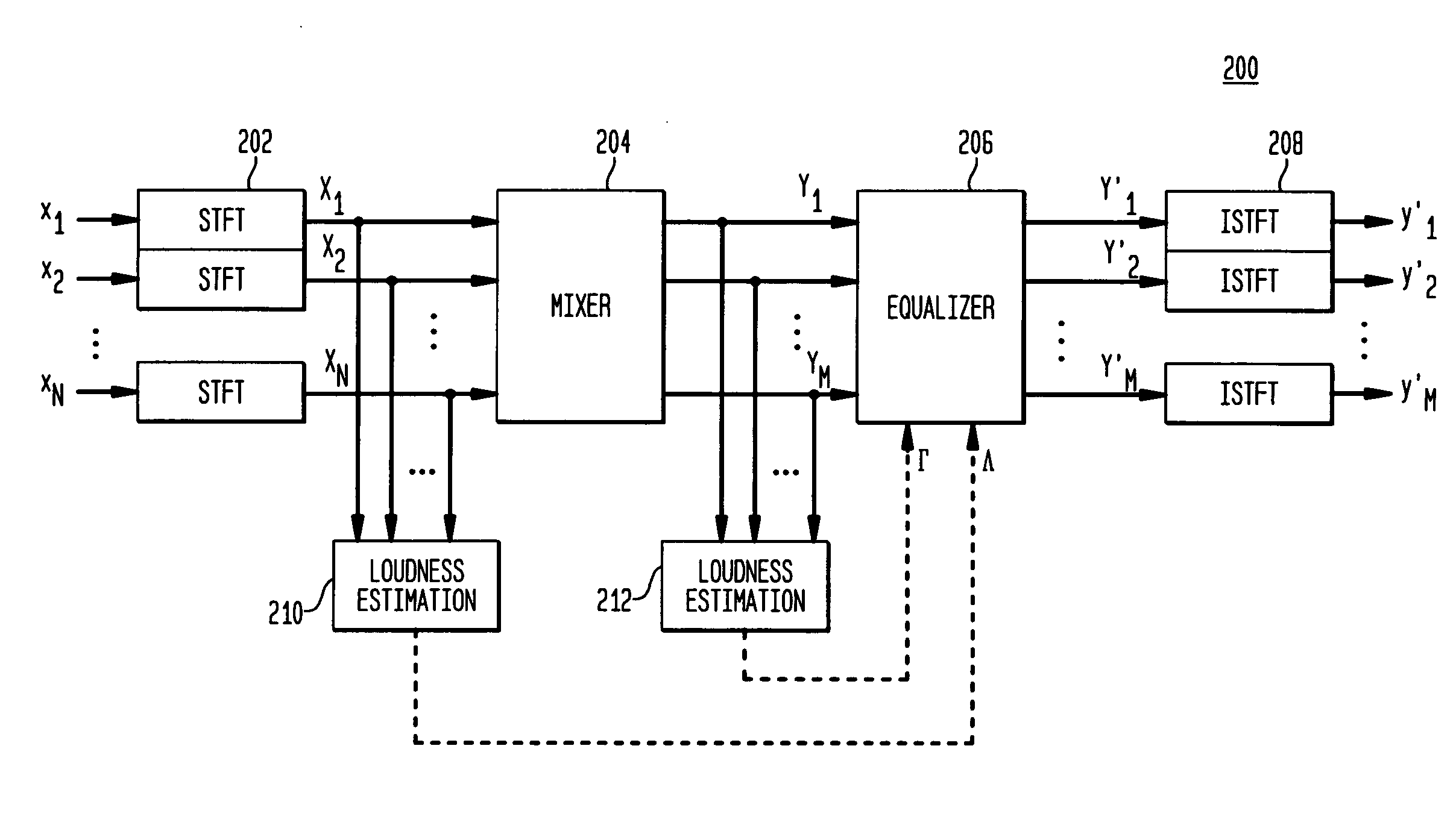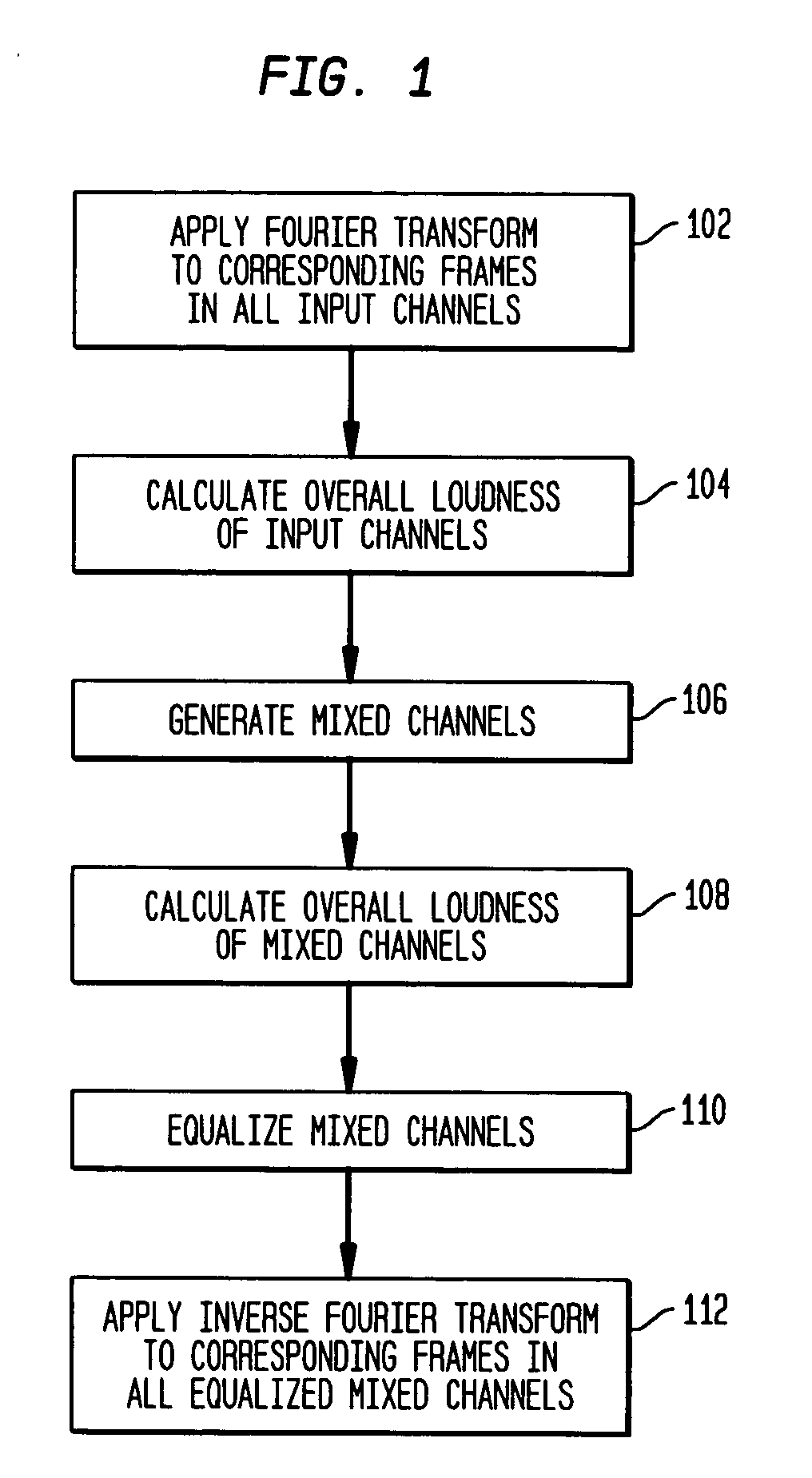Audio mixing using magnitude equalization
a magnitude equalization and audio mixing technology, applied in the field of audio signal processing, can solve the problems of coloration effect and loudness increase that can become audible, and achieve the effect of reducing coloration effect and possibly avoiding loss of spectral energy and/or loudness
- Summary
- Abstract
- Description
- Claims
- Application Information
AI Technical Summary
Benefits of technology
Problems solved by technology
Method used
Image
Examples
Embodiment Construction
Short-Term Energy Equalization
[0025] As described in Baumgarte 4, FIGS. 1 and 2 illustrate how an equalized mixer (e.g., 200 of FIG. 2) performs short-term energy equalization (also referred to herein as power equalization) to mix an N-channel time-domain input audio signal to generate an M-channel time-domain output audio signal, where the input signal has N time-domain channel signals xn(t), n=1, . . . , N, and the output signal has M time-domain channel signals y′m(t), m=1, . . . , M. For down-mixing applications, N>M≧1. For example, when down-mixing a stereo input signal to a mono output signal, N=2 and M=1. For up-mixing applications, 1≦N1).
[0026] As shown in FIG. 2, equalized mixer 200 has N short-time Fourier transform (STFT) blocks 202, a frequency-domain mixer 204, a frequency-domain equalizer 206, and M inverse short-time Fourier transform (ISTFT) blocks 208. In addition, equalized mixer 200 has two loudness estimation blocks 210 and 212. Each transform block 202 perfor...
PUM
 Login to View More
Login to View More Abstract
Description
Claims
Application Information
 Login to View More
Login to View More - R&D
- Intellectual Property
- Life Sciences
- Materials
- Tech Scout
- Unparalleled Data Quality
- Higher Quality Content
- 60% Fewer Hallucinations
Browse by: Latest US Patents, China's latest patents, Technical Efficacy Thesaurus, Application Domain, Technology Topic, Popular Technical Reports.
© 2025 PatSnap. All rights reserved.Legal|Privacy policy|Modern Slavery Act Transparency Statement|Sitemap|About US| Contact US: help@patsnap.com



